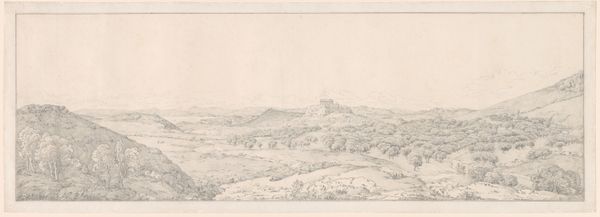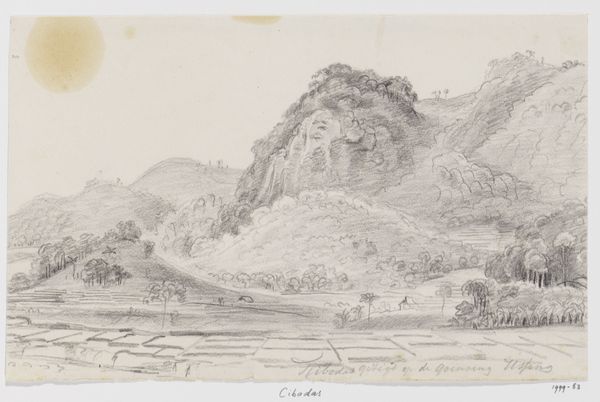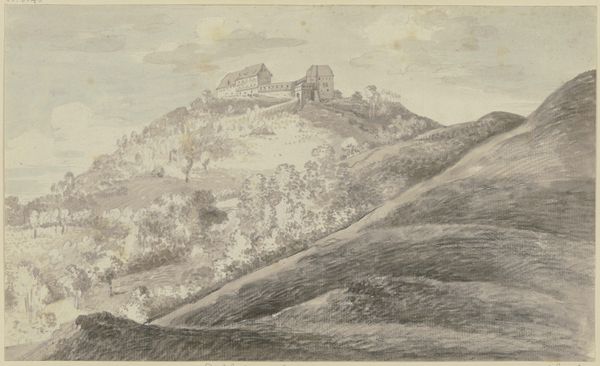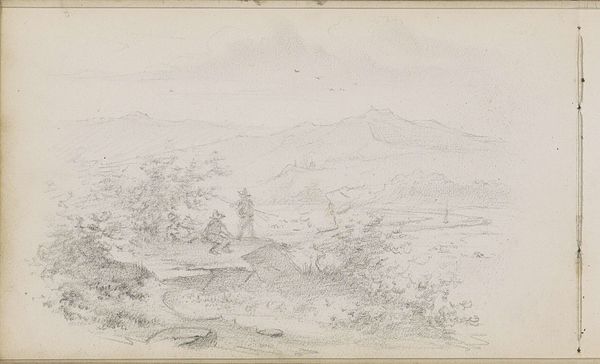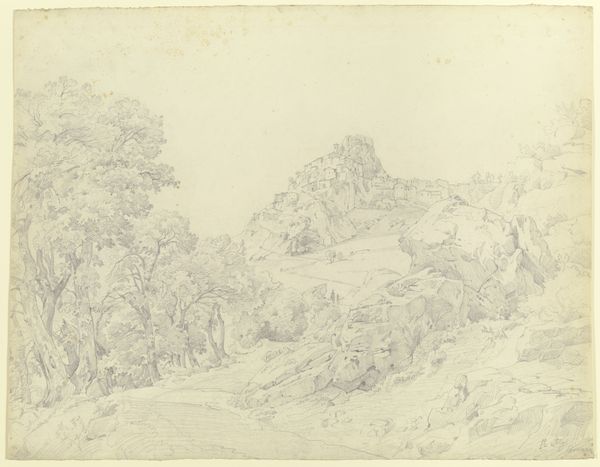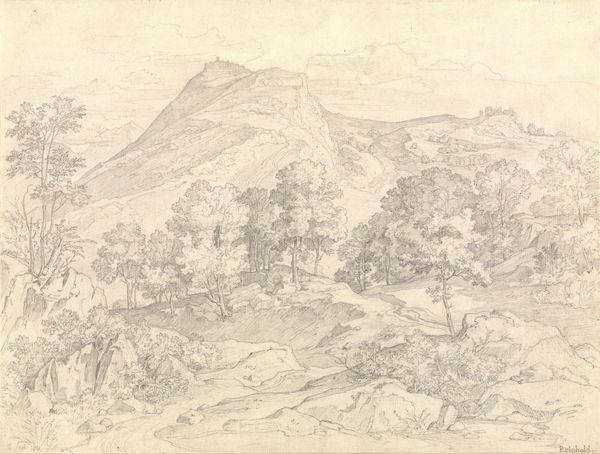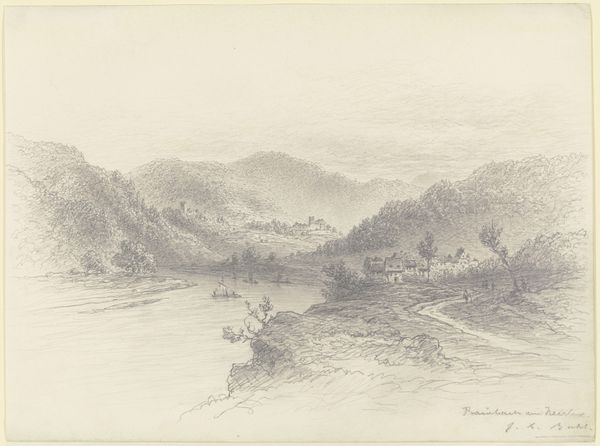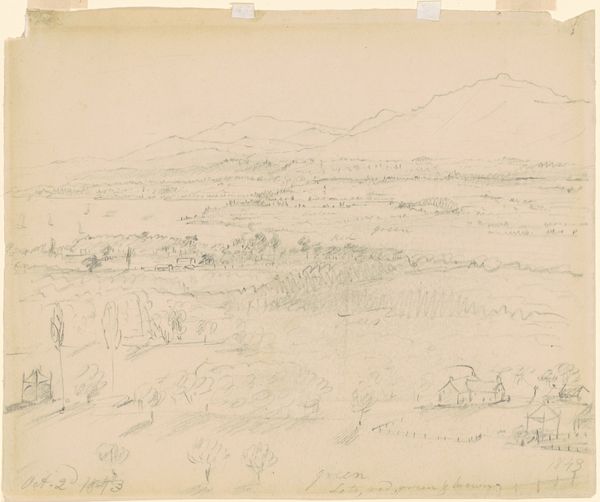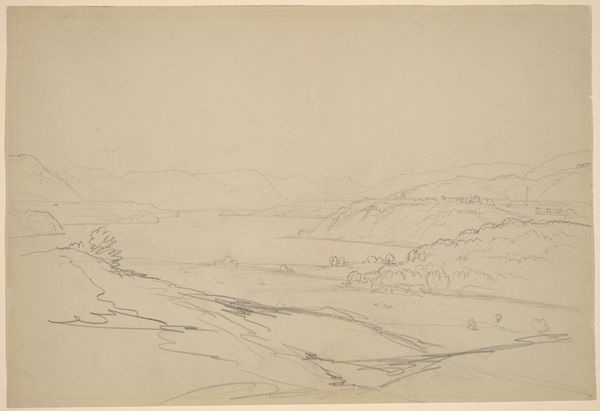
drawing, ink, pencil, chalk
#
drawing
#
neoclacissism
#
pen sketch
#
pencil sketch
#
landscape
#
ink
#
romanticism
#
pencil
#
chalk
Copyright: Public Domain
Curator: Looking at this drawing, I immediately feel a sense of stillness. There’s a quietude that speaks volumes. The pale tones and delicate lines seem to hold their breath. Editor: You’ve picked up on something key, I think. We’re looking at "Ansicht der Wartburg vom Johannistal," or "View of the Wartburg from the Johannistal," a landscape rendering crafted with ink, pencil, and chalk, likely between 1790 and 1794, by Georg Melchior Kraus. It resides here in the Städel Museum. Curator: The Wartburg perched up there on the hill seems to be guarding secrets. Castles always make me think of fairy tales and, well, imprisonment. Editor: Well, in that sense, your intuition is on point. Wartburg isn't merely a fortress; it's brimming with history, and it served as Martin Luther's refuge where he translated the New Testament into German. That is a really neat detail. The piece sits interestingly on the cusp of Neoclassicism and Romanticism—landscape as a mirror to both reason and passionate feeling. Curator: That position between styles is neat. It brings to mind what that space means, literally. What's wild about that historical detail you mentioned about Wartburg and Luther is that landscapes so often function as silent witnesses to pivotal moments. The land remembers. It holds stories that the architecture on it can't. I guess this place of supposed imprisonment was Luther's most freeing moment? Editor: Precisely. Landscapes in art transcend simple depictions. The symbolism connects to themes of sanctuary, cultural identity, and historical weight. Kraus uses a rather understated palette. Look how he uses light and shadow. This emphasizes form but also invokes a sense of reverie and introspection, encouraging a dialogue between past and present. Curator: This gives me a sense of wonder. Editor: To summarize then, this particular artwork gives insight into a defining cultural moment in the history of the castle itself, making it not just a scenic view, but also an emblem of transformation and persistence. Curator: Which makes one think of that quote "history doesn't repeat itself but it often rhymes." Perhaps the Wartburg and this drawing's creation were a couple of the early beats of the rhyme we are currently hearing.
Comments
No comments
Be the first to comment and join the conversation on the ultimate creative platform.
